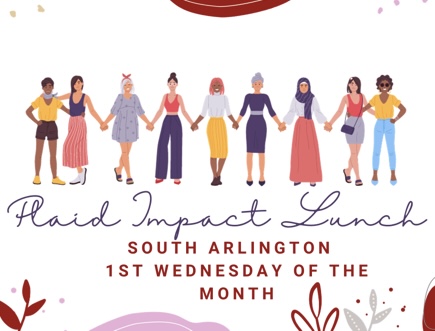Gratitude: A working definition might be, “a readiness to express appreciation”.
During this season we expect the question: “What are you grateful for this year?” Health and wellbeing? The love of family and friends? But perhaps in these times of political, social and economic unrest we may struggle to find a “readiness” to express appreciation for much of what is happening in our world.
As the economy threatens to strip us of the assurances and hope that we found in the past, we still somehow want to recover optimism and find our footing again. Our belief in the essential role that gratitude plays in creating a life of purpose, meaning, joy and fulfillment, motivates us to re-think gratitude. It helps us find the nuggets of treasure buried beneath the rubble of uncertainty.
Re-Thinking
How do we begin the re-thinking process? I suggest using a popular personality instrument as a framework for implementing a personal strategy. It can be a simple and powerful tool. It’s simple because it hinges on three little words that are familiar to us all: feeling, doing, and thinking. It’s powerful because the values behind these words hold us hostage until we become skilled at testing, organizing and exercising them to obtain our desired results.
Question: Are you a Feeler, Doer, or Thinker?
The right answer is “yes”! Only one of these words is dominant. However, we each operate as all three to a greater or lesser degree, as we respond to the stimuli of a given moment. The key to crafting the values that we desire is to be on friendly terms with our three “selves”. We should also remember that flexibility and collaboration are always the best strategy. As self-evaluators, we will utilize all three. Allow the Feeler Self to make peace with our environment. Let the Doer-Self make meaningful work for us to do. And allow the Thinker-Self to make plans, solve problems and establish purpose and identity.
So, let’s get started.
The Feeler Self.
This part of us acknowledges and processes emotions. Utilizing feelings productively is the most important step in any strategy. Nothing can derail a dream quicker than runaway emotions. Consider the range of powerful negative forces that might stand in the way of thinking: sadness, anger, fear, confusion, fatigue, shame, awkwardness. The list is endless.
A trusted team of psychologists that I follow provided a clue for beginning the process of corralling negative feelings. They point out our natural tendency is to escape pain as quickly as possible. But a better strategy is to sit in the pain of negative feelings. Escaping too soon leads to destructive practices—addictions to numb the pain, or negative mindsets that jeopardize future successes.
The work of the feeler self is to feel the pain, and then let it all out. “This stinks!” “It hurts!” “I’m mad!” We scream the truth, turn away, bury our heads in the sand. But then, exhausted, we pull our heads out of the sand and face fully the frightful landscape that is closing in on us. Thus, the Feeler Self provides the energy to fuel the other selves as we press on to create the peaceful, loving frequency of wholeness and prosperity on the other side of economic chaos.
The Doer Self.
The work of the doer begins with an evaluation of economic history. Has the world ever seen times like these? Of course it has! There is nothing new under the sun, right? Although technology puts a different spin on the problems of our day, the fundamental issues have not changed. The past 5,000 years of written history have seen economic cycles of doom. Devalued currencies. Destressed workers. Domination by the powerful. Depressing forecasts. Each season of devastation always ran its course but then gave rise to a new era of correction and prosperity.
Economists today have amassed data from 165 countries since the mid 1960’s to help determine the policies and practices that create prosperity vs. poverty. We, as a community and as individuals, have full access to the knowledge needed to guide our decisions. The Doer Self will study the events of the past. They glean information and inspiration to re-focus the lens and view both the present and future with greater confidence and coherence.
The second work of the Doer Self is to listen to the voices of clear, deep strategic thinkers, who present a balanced explanation of various (even opposing) viewpoints. We know that the mainstream media are driven by advertisers and must support Wall Street. So as the segment of the economy that feeds the advertisers, the Doer Self will diversify her information sources. The diversity of information and clarity of opinions will bring greater calm to the Feeler Self and provide ammunition to the Thinker Self.
The Thinker Self.
Crafting strategies for the present that will yield benefit for the future is the work of the Thinker Self. By synthesizing feelings, facts and experiences provided by Feeler and the Doer, the Thinker Self has all the raw materials to part the turbulent sea of economic confusion and walk across to the other side.
My three selves, working in harmony with each other, provided me with a renewed readiness to express gratitude for the current times. I am grateful for the upswing that lurks just beyond the present downturn—a knowledge that allows me to press into the good and bring it about faster. I am grateful for the technology which manifests opportunities, communicated with lightning speed compared with anything known in the past. I am grateful for my belief in humanity and our ability to think our way through any situation. I am grateful for yet another significant wealth transfer, and confident that I can choose to land on the winning side of it.
Please join me in rallying your three selves. Spread the word and stir up a readiness to express gratitude for all that we have now, and all that the future holds.
Connect with Gail on her website or read more from her on Plaid.












